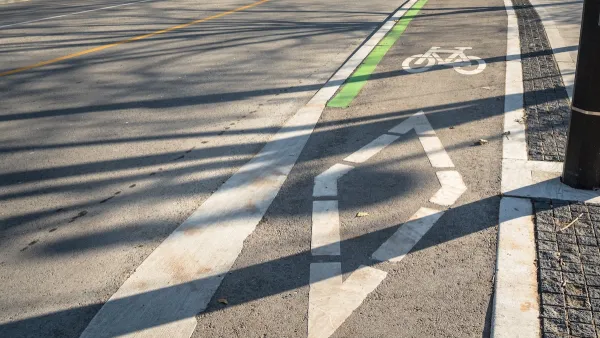The National Association of City Transportation Officials has launched an initiative to help members better plan for and implement infrastructure for cyclists.
"[T]he U.S. Census Bureau's latest American Community Survey had some sobering news about bicycling: Only about half of 1 percent of Americans bike to work. A number of city planners are seeing that statistic as evidence that some more radical bicycling strategies are in order. It's time to think beyond bike lanes, they say, and start using bike-only traffic signals, traffic-protected "cycle-tracks," and other street designs that are common in European cities such as Amsterdam and Copenhagen, where up to 40 percent of all trips are made on two wheels.
Doing that is harder than it sounds. American street-design manuals and regulatory mechanisms revolve around cars, not cyclists. As a result, few traffic engineers possess the technical knowledge - and bureaucratic savvy - necessary to implement novel bike treatments."
The initiative is called Cities for Cycling and it's intended to serve as a clearinghouse of bicycle plans and other information to help cities adopt best practices.
FULL STORY: Cities for Cycling Embrace European Street Designs

National Parks Layoffs Will Cause Communities to Lose Billions
Thousands of essential park workers were laid off this week, just before the busy spring break season.

Retro-silient?: America’s First “Eco-burb,” The Woodlands Turns 50
A master-planned community north of Houston offers lessons on green infrastructure and resilient design, but falls short of its founder’s lofty affordability and walkability goals.

Delivering for America Plan Will Downgrade Mail Service in at Least 49.5 Percent of Zip Codes
Republican and Democrat lawmakers criticize the plan for its disproportionate negative impact on rural communities.

Test News Post 1
This is a summary

Test News Headline 46
Test for the image on the front page.

Balancing Bombs and Butterflies: How the National Guard Protects a Rare Species
The National Guard at Fort Indiantown Gap uses GIS technology and land management strategies to balance military training with conservation efforts, ensuring the survival of the rare eastern regal fritillary butterfly.
Urban Design for Planners 1: Software Tools
This six-course series explores essential urban design concepts using open source software and equips planners with the tools they need to participate fully in the urban design process.
Planning for Universal Design
Learn the tools for implementing Universal Design in planning regulations.
EMC Planning Group, Inc.
Planetizen
Planetizen
Mpact (formerly Rail~Volution)
Great Falls Development Authority, Inc.
HUDs Office of Policy Development and Research
NYU Wagner Graduate School of Public Service




























